Top Rare US Coin Pennies, Nickels, Quarters, Half Dollars and Dollars
Why I Focus on the Rarest of the Rare and their approximate value, as highlighted on our website. When I think about why I built Global Coin, the answer is simple: I’ve always believed that coin collecting—done right—is about more...
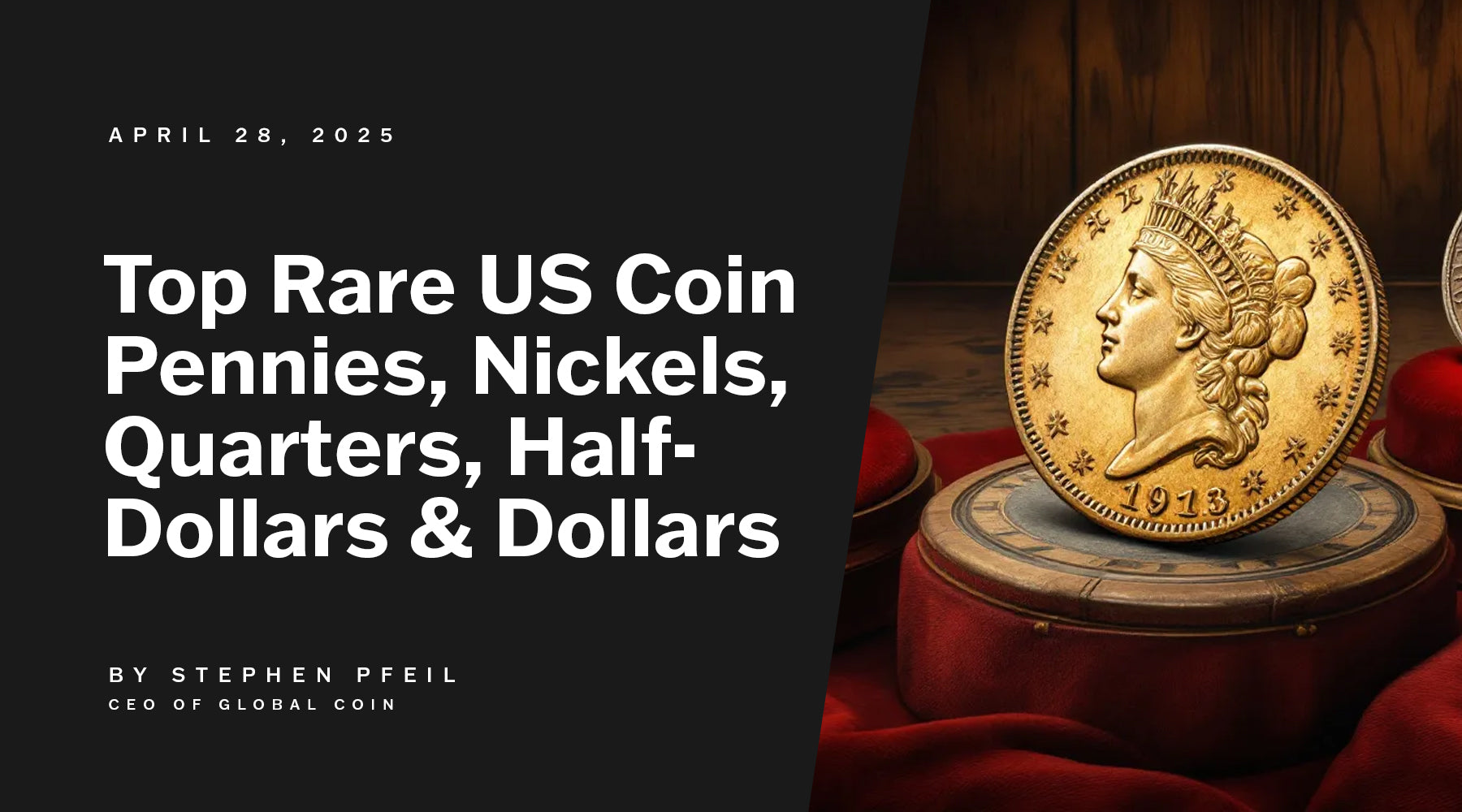
Why I Focus on the Rarest of the Rare and their approximate value, as highlighted on our website.
When I think about why I built Global Coin, the answer is simple: I’ve always believed that coin collecting—done right—is about more than metal. It’s about meaning and ensuring access to the finest collecting opportunities. It’s about strategy. And most of all, it’s about securing something truly rare in a world that’s flooded with the common.
In this guide, I’m not just listing the usual suspects. I’m sharing the rare US coins that I personally watch, buy, and help my clients secure—because they’re not just collectible, they are extremely rare. They’re irreplaceable. These are the coins that speak to legacy, to long-term value, and to the kind of financial clarity that’s hard to find in other markets. Some are classics like the 1794 Flowing Hair Silver Dollar, while others are modern masterpieces with sharply rising value trajectories, reflecting the powerful shift we’ve seen in 21st-century numismatics. Specific coin dates play a crucial role in determining the rarity and value of these coins, as certain years and denominations are particularly sought after by collectors.
Why I Focus on the Ultra-Rare
Let’s be honest—this market has become noisy. Every week, I see ads screaming about bullion sales and “discounts” like we’re talking about grocery store deals. But serious investors—and serious collectors—aren’t looking for the cheapest coin. They’re looking for the right coin. A coin that can’t be price-shopped, because it stands alone in story, in condition, and in investment potential.
That’s what I mean when I say we focus on the “rarest of the rare.” At Global Coin, we’re not building collections. We’re building portfolios. That means prioritizing pieces that are virtually immune to comparison—coins with provenance, with unique characteristics, and with a market narrative that’s already proving itself.
The Modern Edge: Rare Coins of the 21st Century, showcasing the evolution of coinage.
Over the past two decades, I’ve seen a seismic shift. Modern era coins—especially those with low mintages, PF70/MS70 grades, or unique designations—are rapidly gaining ground on their classic counterparts. Why? Because they bring a new level of transparency, innovation, and accessibility to the market. Coins like the 2009 Ultra High Relief Double Eagle or the 2020-W V75 Gold Eagle aren’t just beautiful—they’re historically meaningful, minting marvels, and poised for sustained appreciation.
What You’ll Find in This Guide
This isn’t a ranking. It’s a roadmap. Inside, I walk through ten coins that I believe represent the best of rare US numismatics—coins that check every box: rarity, history, condition, and momentum. I’ll share the backstory, the errors or features that drive their value, and what makes each one a smart hold for 2025 and beyond.
So, whether you’re looking to add an iconic classic or a breakout modern issue to your collection, my goal is simple: to help you understand why each of these coins matters. Not just today—but 10, 20, even 50 years from now, as a form of currency.
Let’s dig in. The coins you’re about to discover aren’t just rare—they’re defining what the next generation of legacy wealth looks like.
Are you curious about which rare US coin holds the title of the most valuable? Or perhaps you’re wondering if that old coin in your collection could be a hidden treasure? This in-depth guide explores the top 10 rare US coins that captivate collectors and investors for their unparalleled rarity, historical significance, and staggering market value as currency. From the legendary 1794 Flowing Hair Silver Dollar to the elusive 1913 Liberty Head Nickel, we’ll uncover the stories, errors, and unique features that make these rare US coins the crown jewels of numismatics. Whether you’re a seasoned collector or a beginner, this article will help you discover which rare US coins could transform your collection into a legacy.
Key Takeaways
-
Iconic Rare Coins: Coins like the 1794 Flowing Hair Silver Dollar, 1913 Liberty Head Nickel, and 1933 Saint-Gaudens Double Eagle are prized for their historical importance, extreme scarcity, and breathtaking designs, making them some of the most sought-after rare US coins in the world.
-
Unique errors Boost Value: Unique errors, such as those found in the 1943 Copper Penny, 1955 Doubled Die Lincoln Cent, and 1937-D Three-Legged Buffalo Nickel, can elevate a coin’s value from mere cents to millions at auction, showcasing the allure of imperfections in numismatics.
-
Investment Potential: Investing in rare US coins offers the promise of substantial long-term returns, driven by historical price appreciation, growing collector demand, and the strategic advantage of diversifying your collection to balance risks and maximize growth.
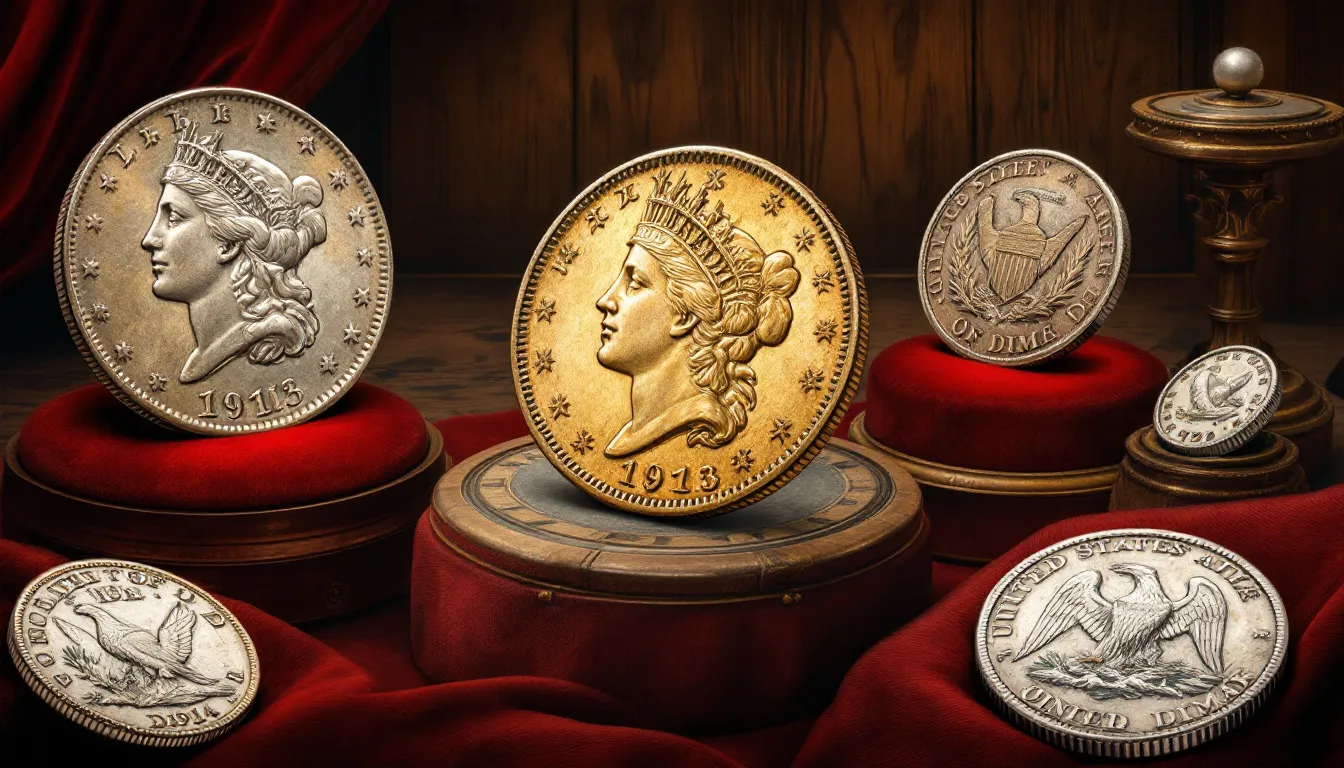
Introduction to Rare Coins
Rare coins are a fascinating world that combines history, art, and investment. For many collectors, the thrill of the hunt is what drives their passion for coin collecting. With millions of coins minted every year, it’s surprising to learn that some coins can be extremely rare and valuable. In this section, we’ll delve into the world of rare coins, exploring what makes them unique, how to identify them, and where to find them.
One of the most significant factors that contribute to a coin’s rarity is its mint mark. For example, the 1982 No Mint Mark Roosevelt Dime is a highly sought-after coin among collectors. Other coins, like gold coins, can be rare due to their limited production or historical significance. Mint coins, such as those produced by the US Mint, can also be highly valuable due to their condition, rarity, and demand.
Coin collecting is a popular hobby that requires patience, knowledge, and a keen eye for detail. Many coins, including half dollars, quarters, and pennies, can be found in circulation, but some are more valuable than others. The approximate value of a coin can vary greatly depending on its condition, rarity, and demand, especially compared to many coins . For instance, a rare penny like the 1943 Copper Penny can sell for thousands of dollars, while a common coin like the 1980 Lincoln Cent may only be worth its face value.
Precious metals, such as gold, silver, and platinum, play a significant role in the world of rare coins. Coins made from these metals can be highly valuable due to their intrinsic value and rarity. The mint mark, date, and condition of a coin can also impact its value. For example, a coin with a rare mint mark or a unique error, like a doubled die obverse, can be extremely valuable. Some of these coins were found in pocket change, while others were discovered in hidden stashes or inherited from family members. The only issue with finding rare coins is that many of them are extremely rare, and only a few exist today.
In the world of rare coins, America has a rich history of producing unique and valuable coins. From the early days of copper pennies to the modern era of gold and silver bullion coins, the US Mint has produced some of the most iconic coins in the world. PCGS, one of the leading coin grading services, has graded millions of mint coins, providing collectors with a way to verify the authenticity and condition of their coins. For more detailed insights, explore the graded and ungraded coins guide.
Whether you’re a seasoned collector or just starting out, the world of rare coins has something to offer. With its rich history, unique stories, and potential for investment, rare coins are a fascinating hobby that can last a lifetime. So, if you’re interested in learning more about rare coins, keep reading, and who knows, you might just discover a new passion.
The Allure of Rare US Coins
The fascination with rare US coins extends far beyond their monetary worth. These coins are tangible pieces of American history, each one telling a unique story of artistry, innovation, and sometimes serendipitous mistakes. Among the most coveted are the 1794 Flowing Hair Silver Dollar, the 1913 Liberty Head Nickel, and the 1933 Saint-Gaudens Double Eagle. These rare US coins are not merely currency; they are artifacts that capture pivotal moments in the nation’s past, from the birth of the US Mint to the economic upheavals of the 20th century, captured in pictures.
Collectors and investors are drawn to these coins for their scarcity, aesthetic beauty, and the potential for significant financial returns. For instance, the 1933 Saint-Gaudens Double Eagle is renowned not only for its exquisite design but also for the legal drama surrounding its ownership, making it one of the most valuable US coins ever sold. Similarly, the 1913 Liberty Head Nickel, with only five known examples, and the 1794 Flowing Hair Silver Dollar, the first dollar coin minted by the United States, are dream acquisitions for any serious numismatist. Their rarity and historical weight make them the pinnacle of rare US coin collecting.
1794 Flowing Hair Silver Dollar: The First of Its Kind
The 1794 Flowing Hair Silver Dollar holds a revered place in numismatic history as the inaugural dollar coin produced by the fledgling United States Mint, minted between 1794 and 1795. Designed by Robert Scot, this iconic coin features a graceful bust of Liberty with flowing hair on the obverse and a majestic eagle encircled by a wreath on the reverse. Weighing approximately 26.96 grams with a diameter of 39 to 40 mm, its substantial size and intricate design reflect the ambition of a young nation. The coin's image, depicting Liberty and the eagle, plays a crucial role in its collectability and value among collectors.
With an estimated 120 to 130 specimens surviving today, the 1794 Flowing Hair Silver Dollar is exceptionally rare. Its scarcity, combined with its historical significance, drives its value to extraordinary heights. In 2013, a pristine example shattered records by selling for over $10 million at auction, cementing its status as one of the most valuable rare US coins. For collectors, owning this coin is akin to possessing a piece of America’s founding era, making it a cornerstone of any elite collection.
1913 Liberty Head Nickel: A Numismatic Mystery
The 1913 Liberty Head Nickel is a legend in the world of rare US coins, with only five known specimens in existence. This coin’s extreme rarity and mysterious origins make it one of the most coveted treasures in American numismatics. Never officially released into circulation, the 1913 Liberty Head Nickel is believed to have been struck clandestinely, adding an air of intrigue to its legacy. Its value is astronomical, with examples frequently fetching millions at auction.
The allure of this rare US coin lies not only in its scarcity but also in the stories surrounding its creation. Theories abound about how these nickels were minted, with some speculating they were produced as test pieces or even as illicit creations by mint employees. Regardless of its origins, the 1913 Liberty Head Nickel exemplifies how minting anomalies can transform a humble five-cent piece into a multimillion-dollar masterpiece.
1933 Saint-Gaudens Double Eagle: A Golden Icon
The 1933 Saint-Gaudens Double Eagle is a gold coin that embodies the pinnacle of American coinage artistry. Designed by renowned sculptor Augustus Saint-Gaudens, its breathtaking depiction of Liberty striding forward with a torch and olive branch is considered one of the most beautiful designs in numismatic history. However, its value extends beyond aesthetics due to its dramatic legal history.
Produced during the Great Depression, nearly all 1933 Double Eagles were ordered melted down after the U.S. abandoned the gold standard. A few escaped destruction, but their ownership was deemed illegal, sparking decades of legal battles. One specimen famously sold for over $7.5 million at auction in 2002, and its value has only climbed since. The combination of artistic brilliance, historical significance, and legal intrigue makes the 1933 Saint-Gaudens Double Eagle a must-have for collectors of rare US coins.
Rare Pennies Worth Collecting
Pennies may seem like the humblest of coins, but certain rare varieties are worth a fortune due to their historical context and minting errors. Among the most desirable rare US coins are the 1943 Copper Penny, the 1955 Doubled Die Obverse Lincoln Cent, and the 1969-S Lincoln Cent. These pennies are not mere pocket change; they are numismatic gems that can command thousands or even millions at auction.
Collectors are captivated by these pennies for their rarity and the fascinating stories behind their creation. The 1943 Copper Penny, for example, is a product of a wartime error, while the 1955 Doubled Die Obverse Lincoln Cent showcases a striking visual mistake. The 1969-S Lincoln Cent, with its rare doubled die obverse, is a modern rarity that excites collectors. These coins demonstrate how small errors can turn everyday cents into extraordinary treasures.
1943 Copper Penny: A Wartime Anomaly
The 1943 Copper Penny is one of the most famous error coins in American history, with only a handful of examples known to exist. During World War II, the U.S. Mint switched to steel pennies to conserve copper for the war effort. However, a small number of 1943 pennies were mistakenly struck in copper, creating one of the rarest US coins in existence. These errors are now valued at approximately $10,000 or more, depending on condition.
The story of the 1943 Copper Penny is a collector’s dream, blending wartime history with the thrill of discovering a minting mistake. Some were found in circulation decades ago, sparking urban legends about their value. Today, this rare US coin remains a holy grail for penny enthusiasts and a testament to the power of serendipity in numismatics.
1955 Doubled Die Obverse Lincoln Cent: A Visual Marvel
The 1955 Doubled Die Obverse Lincoln Cent is celebrated for its dramatic doubling error, where the date, inscriptions, and other elements on the obverse appear duplicated. This error, caused by a misalignment during the minting process, creates a visually striking effect that captivates collectors. Its historical significance and bold appearance make it one of the most sought-after rare US coins.
Valued at thousands of dollars in high grades, the 1955 Doubled Die Lincoln Cent is a prime example of how minting errors can elevate a coin’s worth. Collectors prize its clarity and the story of its discovery, as many were released into circulation before the error was noticed. For penny collectors, this coin is a must-have masterpiece.
1969-S Lincoln Cent: A Modern Rarity
The 1969-S Lincoln Cent with a doubled die obverse is one of the rarest modern pennies, with only a few dozen examples known. The doubling on the date and inscriptions is subtle but significant, making this coin a favorite among collectors of rare US coins. Its value ranges from $30,000 to $120,000, depending on condition, with high-grade specimens fetching top prices at auction.
The 1969-S Lincoln Cent’s rarity and modern appeal make it a standout in the world of penny collecting. Its discovery in the late 1960s sparked excitement among numismatists, as it proved that even recent coins could become valuable rarities. For collectors seeking a blend of accessibility and prestige, this rare US coin is a perfect addition.
Valuable Rare Nickels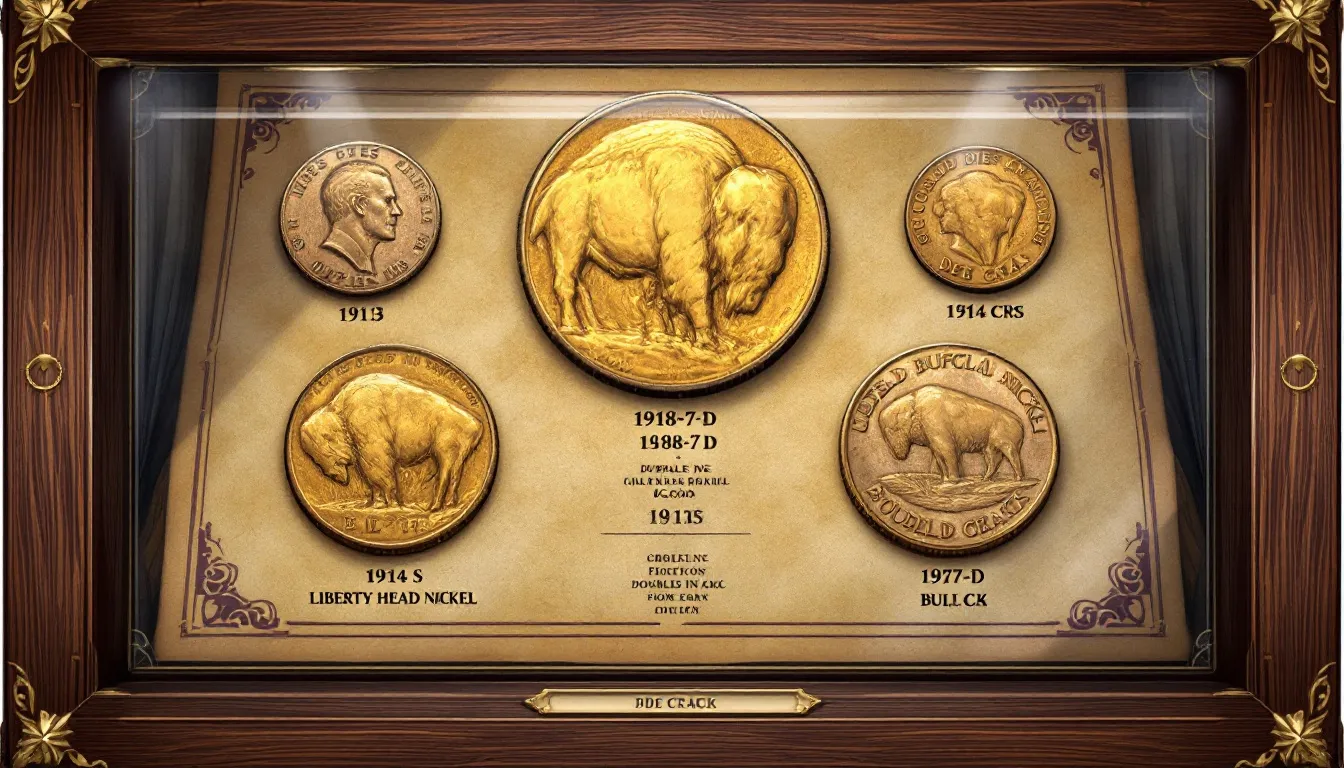
Nickels may be worth just five cents in everyday transactions, but certain rare varieties are numismatic treasures. The 1918/7-D Buffalo Nickel, 1937-D Three-Legged Buffalo Nickel, and 1942-1945 Silver War Nickels are among the most valuable nickels for collectors of rare US coins. These coins are prized not only for their monetary value but also for their unique errors and historical significance.
Collecting valuable nickels requires a sharp eye for detail and an appreciation for the quirks of minting history. The 1918/7-D Buffalo Nickel’s overdate error, the 1937-D Three-Legged Nickel’s missing leg, and the silver content of the War Nickels all contribute to their desirability. These rare US coins offer collectors a chance to own a piece of history at a range of price points.
1918/7-D Buffalo Nickel: An Overdate Gem
The 1918/7-D Buffalo Nickel is renowned for its striking overdate error, where the “7” from 1917 was mistakenly struck beneath the “8” in 1918. This rare US coin, valued at up to $125,000 in top condition, is one of the most significant numismatic rarities of the 20th century, often sought after for its letters . Its scarcity and bold error make it a centerpiece for any nickel collection.
The discovery of the 1918/7-D Buffalo Nickel in the 1930s sparked a frenzy among collectors, as it highlighted the potential for valuable errors in circulation. Today, this rare US coin remains a symbol of the Buffalo Nickel series’ enduring appeal and the thrill of uncovering hidden treasures.
1937-D Three-Legged Buffalo Nickel: A Quirky Classic
The 1937-D Three-Legged Buffalo Nickel is famous for its peculiar minting error, where excessive polishing of the reverse die removed one of the buffalo’s legs. This distinctive flaw, valued at approximately $95,000 in high grades, makes the coin a beloved rarity among collectors of rare US coins.
The 1937-D Three-Legged Buffalo Nickel’s quirky charm and historical context—minted during the Great Depression—add to its allure. Collectors cherish its unique appearance and the story of how a mint worker’s mistake created one of the most iconic nickels in American history.
1942-1945 Silver War Nickels: Wartime Relics
The 1942-1945 Silver War Nickels were minted during World War II, when nickel was diverted for military use. These nickels, composed of 35% silver and precious metals , are valued at approximately $12 or more, depending on condition. Their silver content and historical significance make them a popular choice for collectors of rare US coins.
These nickels, identifiable by their large mint marks above the Monticello dome, reflect a critical period in American history. Collectors prize them for their tangible connection to the war effort and their affordability compared to other rare US coins, making them an accessible entry point for new numismatists.
High-Value Dimes
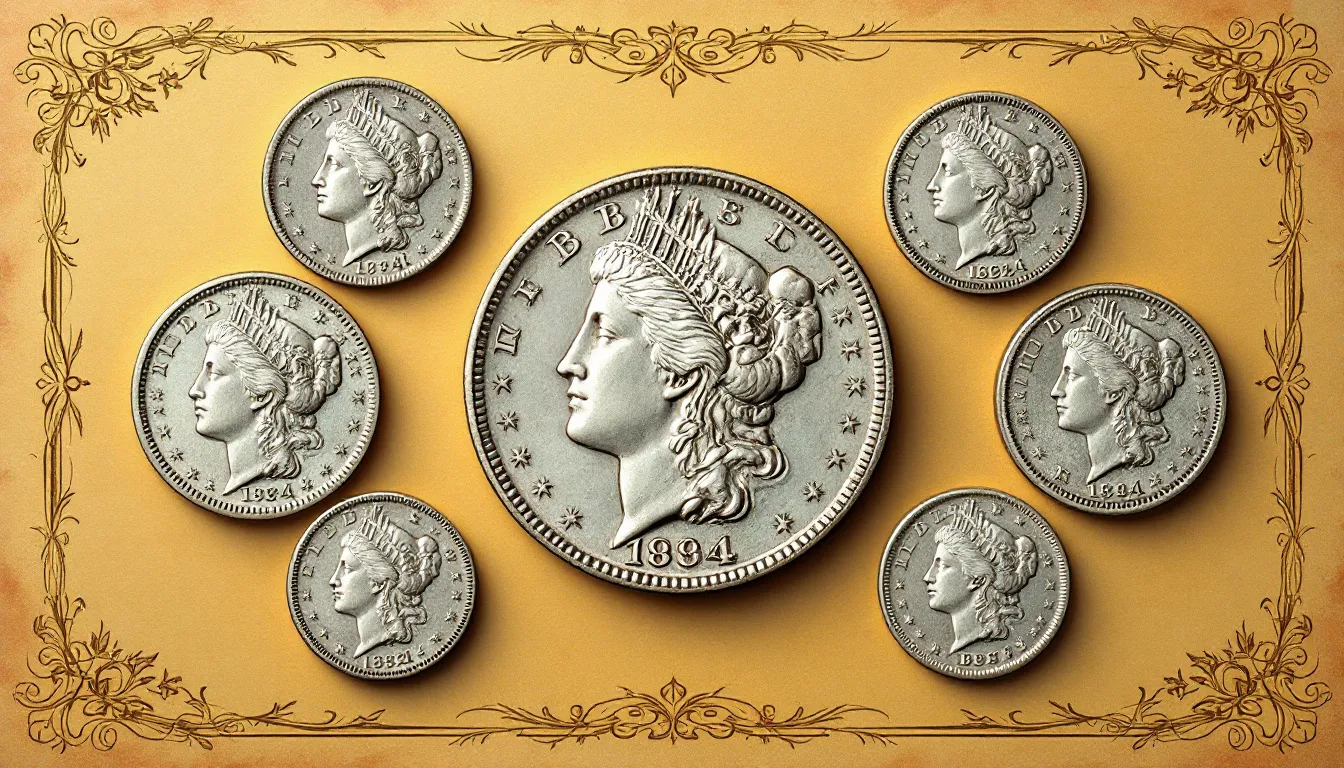 Dimes may be small, but certain rare varieties pack a powerful financial punch. The 1894-S Barber Dime, 1982 No Mint Mark Roosevelt Dime, and 1965 Silver Roosevelt Dime Error are among the most coveted dimes for collectors of rare US coins. These coins stand out for their extreme rarity, minting errors, and historical significance.
Dimes may be small, but certain rare varieties pack a powerful financial punch. The 1894-S Barber Dime, 1982 No Mint Mark Roosevelt Dime, and 1965 Silver Roosevelt Dime Error are among the most coveted dimes for collectors of rare US coins. These coins stand out for their extreme rarity, minting errors, and historical significance.
Collectors and investors are drawn to these dimes for their potential to appreciate significantly. The 1894-S Barber Dime’s minuscule mintage, the 1982 No Mint Mark Roosevelt Dime’s subtle error, and the 1965 Silver Roosevelt Dime Error’s material mistake all highlight how small details can lead to immense value in the world of rare US coins.
1894-S Barber Dime: The Rarest of Dimes
The 1894-S Barber Dime is one of the rarest US coins, with only 24 minted and fewer than 10 known to exist today. Valued at over $1.3 million, with one specimen fetching $1.9 million at auction, this dime is a numismatic legend. Its extreme rarity and historical significance make it a dream acquisition for collectors.
The story of the 1894-S Barber Dime is shrouded in mystery, with some speculating the coins were minted as gifts or test pieces. Regardless of its origins, this rare US coin remains a pinnacle of dime collecting and a testament to the allure of scarcity.
1982 No Mint Mark Roosevelt Dime: A Modern Error
The 1982 No Mint Mark Roosevelt Dime is a sought-after error coin due to the absence of a mint mark, a mistake that occurred during production at the Philadelphia Mint. Valued between $35 and $50, this rare US coin is prized for its accessibility and the excitement of finding a modern rarity.
Collectors appreciate the 1982 No Mint Mark Roosevelt Dime for its subtle yet significant error, which can be identified with careful inspection. Its relatively low cost makes it an excellent entry point for those new to collecting rare US coins.
1965 Silver Roosevelt Dime Error: A Material Mistake
The 1965 Silver Roosevelt Dime Error is a rare anomaly, mistakenly struck on a silver planchet instead of the standard copper-nickel clad. Heavier than typical 1965 dimes, this error coin is valued at approximately $7,000. Its scarcity and intriguing mistake make it a standout among rare US coins.
The 1965 Silver Roosevelt Dime Error’s value lies in its limited supply and the challenge of identifying it among common dimes. For collectors, this rare US coin offers a thrilling hunt and the potential for significant returns.
Coveted Quarters for Collectors
Quarters are a cornerstone of American coinage, and certain rare varieties hold immense value. The 1932-D Washington Quarter, 2004 Wisconsin Extra Leaf Quarter, and 1970-S Proof Washington Quarter are among the most coveted quarters for collectors of rare US coins. These coins combine historical significance, minting errors, and scarcity to create highly desirable pieces.
Collectors seek these quarters for their rarity and the stories behind their creation. The 1932-D Washington Quarter’s low mintage, the 2004 Wisconsin Extra Leaf Quarter’s unique error, and the 1970-S Proof Washington Quarter’s small date variation all highlight the diversity of rare US coins in this denomination.
1932-D Washington Quarter: A Low-Mintage Treasure
The 1932-D Washington Quarter, minted in Denver during the Great Depression, is notable for its limited production of just 436,800 coins. Its scarcity, valued at hundreds to thousands of dollars, makes it a prized rare US coin for collectors and investors.
The 1932-D Washington Quarter’s historical context—marking the bicentennial of George Washington’s birth—adds to its appeal. For collectors of rare US coins, this quarter is a must-have for its blend of rarity and significance.
2004 Wisconsin Extra Leaf Quarter: A Modern Anomaly
The 2004 Wisconsin State Quarter with an extra leaf error is a modern rarity, featuring an additional leaf on the corn stalk due to a die error. The High Leaf variant is rarer and commands higher prices, often fetching hundreds of dollars. This rare US coin is a favorite among state quarter collectors.
The discovery of the 2004 Wisconsin Extra Leaf Quarter in the early 2000s sparked excitement, as it proved that even recent coins could become valuable rarities. Its accessibility makes it a popular choice for collectors of rare US coins.
1970-S Proof Washington Quarter: A Small Date Star
The 1970-S Proof Washington Quarter is distinguished by its small date variation, a subtle but valuable feature that significantly impacts its market value. Valued at hundreds of dollars in top condition, this rare US coin is a favorite among proof coin collectors.
The small date on the 1970-S Proof Washington Quarter requires a keen eye to identify, making it a rewarding find for collectors. Its rarity and distinct feature make it a standout in the world of rare US coins.
Rare Half Dollars and Their Values
Half dollars are often overlooked, but certain rare varieties are numismatic treasures. The 1964 Kennedy Half Dollar, 1955 Franklin Half Dollar Bugs Bunny Variety, and 1838-O Capped Bust Half Dollar are among the most valuable half dollars for collectors of rare US coins. These coins combine monetary value, historical significance, and unique errors.
Collectors and investors seek these half dollars for their scarcity and compelling stories. The 1964 Kennedy Half Dollar’s silver content, the 1955 Franklin Half Dollar Bugs Bunny Variety’s quirky error, and the 1838-O Capped Bust Half Dollar’s limited mintage all underscore the diversity of rare US coins in this denomination.
1964 Kennedy Half Dollar: The Last Silver Half
The 1964 Kennedy Half Dollar is notable for being the last half dollar struck with 90% silver content, minted in the wake of President John F. Kennedy’s assassination. Due to high public demand, most were hoarded rather than circulated, increasing their rarity. Valued at $10 to $100 or more, this rare US coin is a collector’s favorite.
The 1964 Kennedy Half Dollar’s emotional and historical significance, combined with its silver content, makes it a cornerstone of half dollar collecting. For collectors of rare US coins, it’s a tangible link to a pivotal moment in American history.
1955 Franklin Half Dollar Bugs Bunny Variety: A Playful Error
The 1955 Franklin Half Dollar Bugs Bunny Variety is recognized for its distinctive die clash error, creating the appearance of buck teeth on Benjamin Franklin’s portrait. Valued at hundreds of dollars, this rare US coin is prized for its whimsical charm and historical context.
Collectors love the 1955 Franklin Half Dollar Bugs Bunny Variety for its unique error and the story of how a minting mistake created a beloved rarity that has sold for significant sums . Its affordability makes it an accessible addition to collections of rare US coins.
1838-O Capped Bust Half Dollar: A Southern Rarity
The 1838-O Capped Bust Half Dollar, minted in New Orleans, is exceptionally rare, with only about 20 known examples. Valued at over $500,000 in high-grade condition, this rare US coin is a numismatic masterpiece sought after by elite collectors.
The 1838-O Capped Bust Half Dollar’s limited mintage and connection to the early New Orleans Mint add to its allure. For collectors of rare US coins, it represents a rare opportunity to own a piece of early American numismatic history.
Rare Dollar Coins to Discover
Dollar coins are synonymous with prestige, and certain rare varieties are among the most valuable US coins. The 1804 Draped Bust Dollar, 1889-CC Morgan Silver Dollar, and 1921 Peace Dollar are top picks for collectors of rare US coins. These coins combine historical weight, scarcity, and stunning designs.
Collectors and investors are drawn to these dollar coins for their rarity and captivating stories. The 1804 Draped Bust Dollar’s “King of American Coins” status, the 1889-CC Morgan Silver Dollar’s Carson City mystique, and the 1921 Peace Dollar’s post-war symbolism all highlight the allure of rare US coins in this denomination.
1804 Draped Bust Dollar: The King of Coins
The 1804 Draped Bust Dollar, often called “The King of American Coins,” is one of the rarest US coins, with only 15 known examples. Valued at millions of dollars, this coin was struck as a diplomatic gift rather than for circulation, adding to its mystique.
Collectors prize the 1804 Draped Bust Dollar for its extreme rarity and historical importance as a symbol of early U.S. diplomacy. Its status as a pinnacle of rare US coins makes it a dream for numismatists.
1889-CC Morgan Silver Dollar: A Carson City Classic
The 1889-CC Morgan Silver Dollar, minted in Carson City with a low mintage of 350,000, is a rare US coin valued at thousands of dollars. The Carson City mint mark enhances its desirability, as coins from this mint are legendary for their scarcity.
The 1889-CC Morgan Silver Dollar’s connection to the Wild West and its limited production make it a favorite among collectors of rare US coins. Its rising demand underscores its investment potential.
1921 Peace Dollar: A Symbol of Peace
The 1921 Peace Dollar, marking the first year of the Peace Dollar series, commemorates the end of World War I. Valued at up to $67,500 in high grades, this rare US coin is prized for its historical significance and bold design.
The 1921 Peace Dollar’s high-relief design and post-war symbolism make it a standout in dollar coin collecting. For collectors of rare US coins, it’s a powerful reminder of a hopeful era.
How to Identify Rare US Coins
Identifying rare US coins is a critical skill for collectors and investors. By examining coins for mint marks, errors, and unique features, you can distinguish valuable rarities from common change. Mastering these techniques can unlock the potential of your collection and enhance your success in the rare US coin market.
Understanding Mint Marks
Mint marks, small letters indicating where a coin was produced (e.g., “D” for Denver, “S” for San Francisco), significantly impact a coin’s rarity and value. For example, the 1932-D Washington Quarter’s Denver mint mark denotes its low mintage, making it a rare US coin. Learning to locate and interpret mint
Investing in Rare Coins
Investing in rare coins can offer significant long-term financial returns, especially for coins with historical importance and limited availability. Including various types of rare coins in a collection helps mitigate risk and can lead to more balanced investment growth.
This section will explore the long-term investment potential, the importance of diversifying your collection, and the need for those who are interested to stay informed on market trends.
Long-term Investment Potential
Historically, rare coins have shown significant appreciation, with elite coins increasing in value by over 1,000% in certain periods. Coins like the 1794 Flowing Hair Silver Dollar have demonstrated remarkable investment potential, underlining the value of rare coins as a long-term investment in precious metals. Uncirculated coins, due to their pristine condition and rarity, can hold significant collector value.
The value of rare coins has seen significant appreciation, with a reported increase of 175% over the last decade, outpacing traditional assets. This makes investing in rare coins an attractive option for those looking to diversify their investment portfolios and achieve significant returns.
Diversifying Your Collection
Diversifying your coin collection can significantly reduce investment risks and increase potential returns over time. By including a mix of gold, silver, and historical coins, collectors can protect against downturns in specific areas of the coin market and open up opportunities for growth.
Staying informed on market trends enables collectors to make educated decisions on which types of coins to add to their collections. This strategic diversification can greatly enhance the long-term investment potential of a rare coin collection.
Staying Informed on Market Trends
Keeping up with market trends and news is essential for making informed investments in rare coins. Regularly monitoring auction results and collector interest can help investors make better decisions regarding their rare coin investments.
Market demand influences coin prices, making it essential for investors to stay updated on trends to avoid potential losses. Participating in numismatic communities and following industry reports can provide valuable insights, ensuring that collectors stay ahead of market changes and make the most of their investments.
Summary
In summary, the world of rare US coins is rich with history, value, and investment potential. From the 1794 Flowing Hair Silver Dollar to the 1969-S Lincoln Cent, each coin tells a unique story and offers significant returns for collectors and investors alike. By understanding how to identify, buy, and sell these rare coins, and by staying informed on market trends, you can turn coin collecting into a rewarding and profitable endeavor. Whether you’re a seasoned numismatist or just starting out, the treasures hidden within these coins are waiting to be discovered.
Frequently Asked Questions
What makes a coin rare and valuable?
A coin's rarity and value are primarily determined by factors like limited mintage, historical significance, minting errors, and any unique features it may possess. Understanding these elements can help you appreciate the worth of a coin more fully.
How can I identify a rare coin?
To identify a rare coin, examine mint marks, recognize any errors or unique varieties, and consider using professional coin grading services for authenticity and condition assessment. These steps will help you determine the coin's rarity and value.
Where can I buy rare coins?
You can buy rare coins from reputable online dealers, local coin shops, and major auction houses such as Heritage Auctions and Stack's Bowers. Always ensure to verify the credibility of the seller before making a purchase.
Are rare coins a good investment?
Rare coins can be a good investment due to their potential for significant long-term financial returns, particularly if they hold historical value and are limited in supply, especially when removed from circulation. Diversifying your collection can further reduce risks associated with this investment.
How do I stay informed on rare coin market trends?
To stay informed on rare coin market trends, regularly monitor auction results, follow industry reports, and engage with numismatic communities for valuable insights. This proactive approach will help you keep your finger on the pulse of the market.
Related Articles
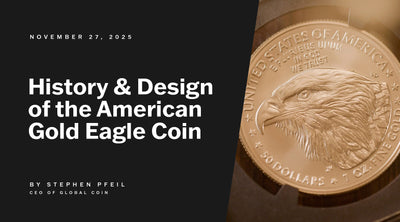
History and Design of the American Gold Eagle Coin
The Gold Eagle Coin is one of the most iconic and widely recognized bullion coins in the world. ...
Discover More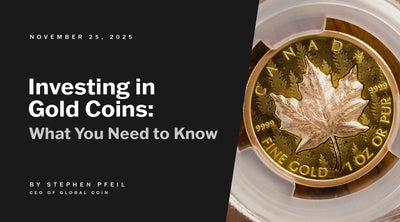
Investing in Gold Coins: What You Need to Know
Disclaimer: Global Coin is a dealer of precious metal coins and does not provide investment, fin...
Discover More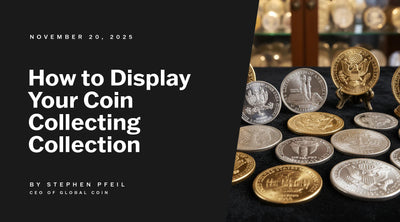
How to Display Your Coin Collecting Collection
If you’re anything like the passionate coin collectors I work with every day at Global Coin, you...
Discover More

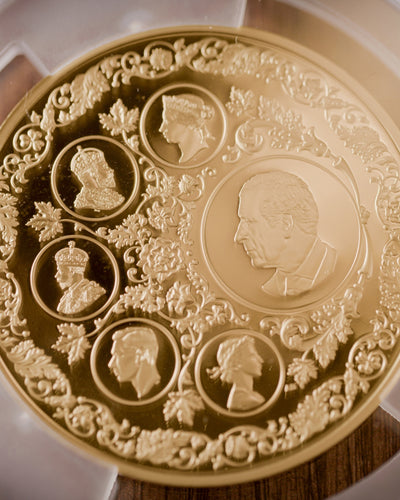
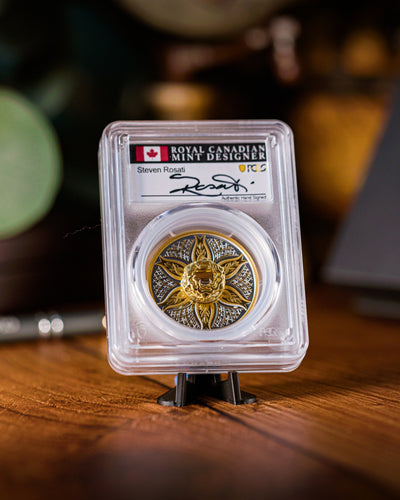
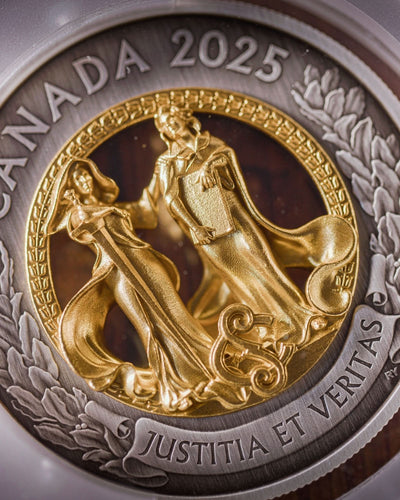
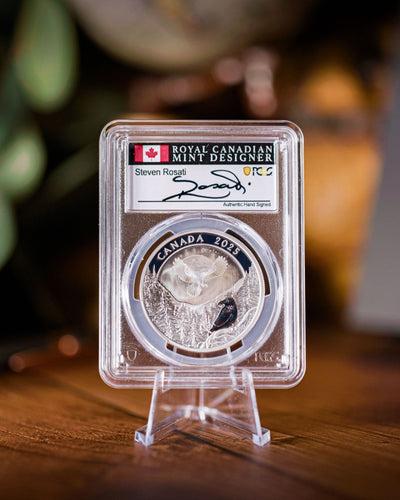
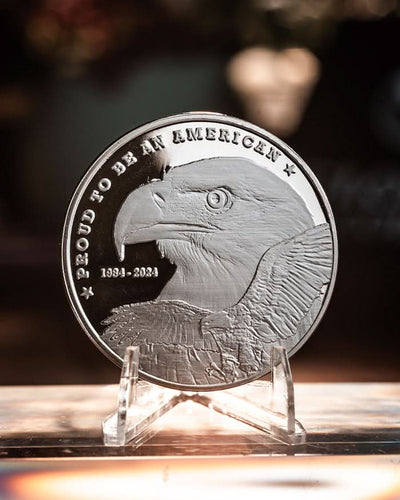
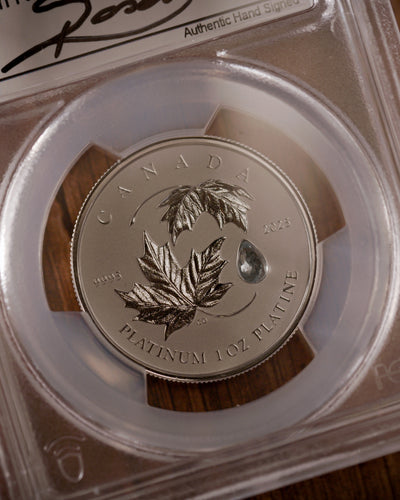
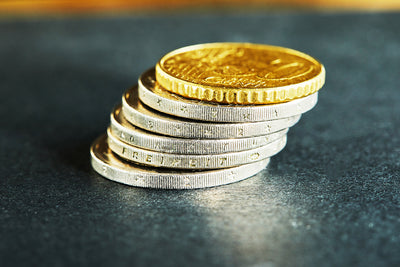
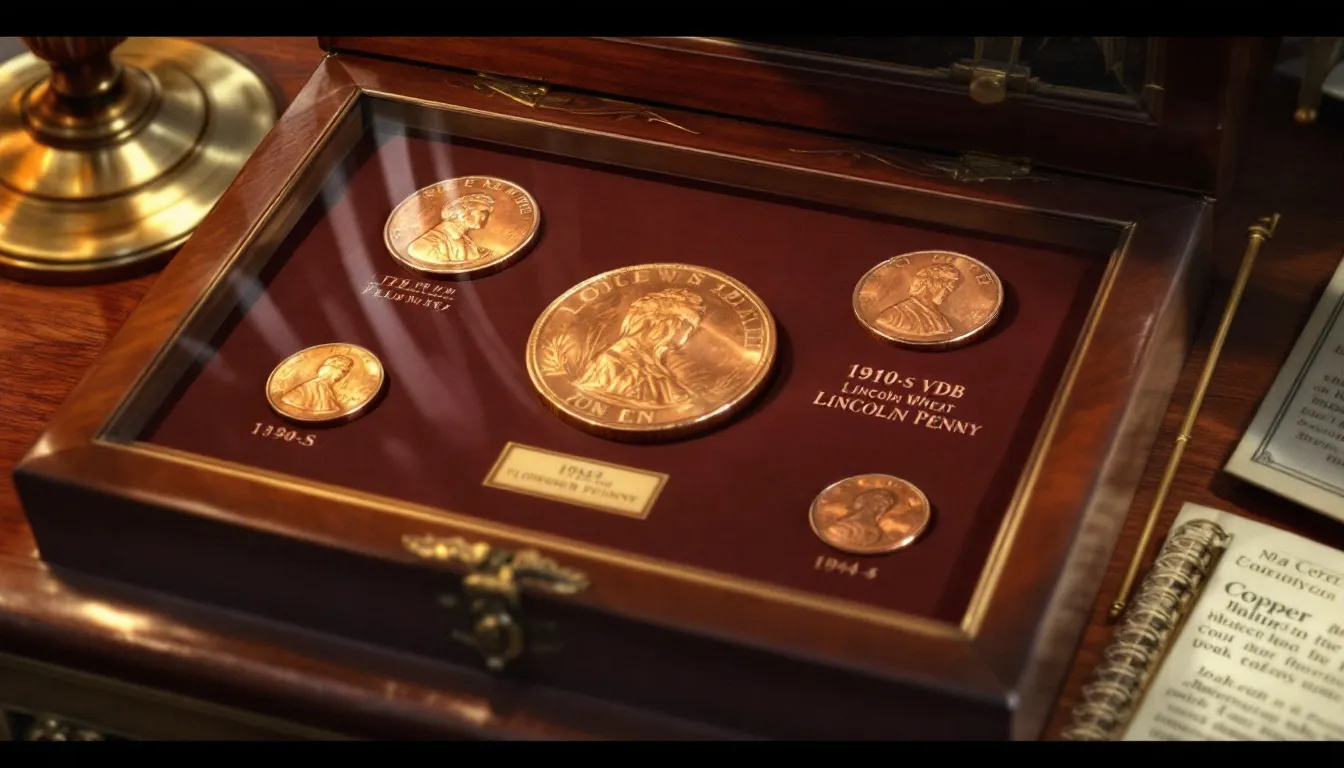
3 comments
I have a 1969 penny with what looks to be the Carson City Mint Mark, and I believe that you can see what looks to be the arrows from a Seated Liberty coin
Matt Rosenow
Dear Sir, I have a 1967 1 cent Liberty coin, no “S” , “D” mark.
I am interested in the value of the coin
Greetings!
Stefan
I have been collecting coins for a long time now. And I am yet to run into a error Quarter.
Or any coin. Probably because collectors have picked them all up.
Jesus Trevino Jr
Leave a comment
This site is protected by hCaptcha and the hCaptcha Privacy Policy and Terms of Service apply.